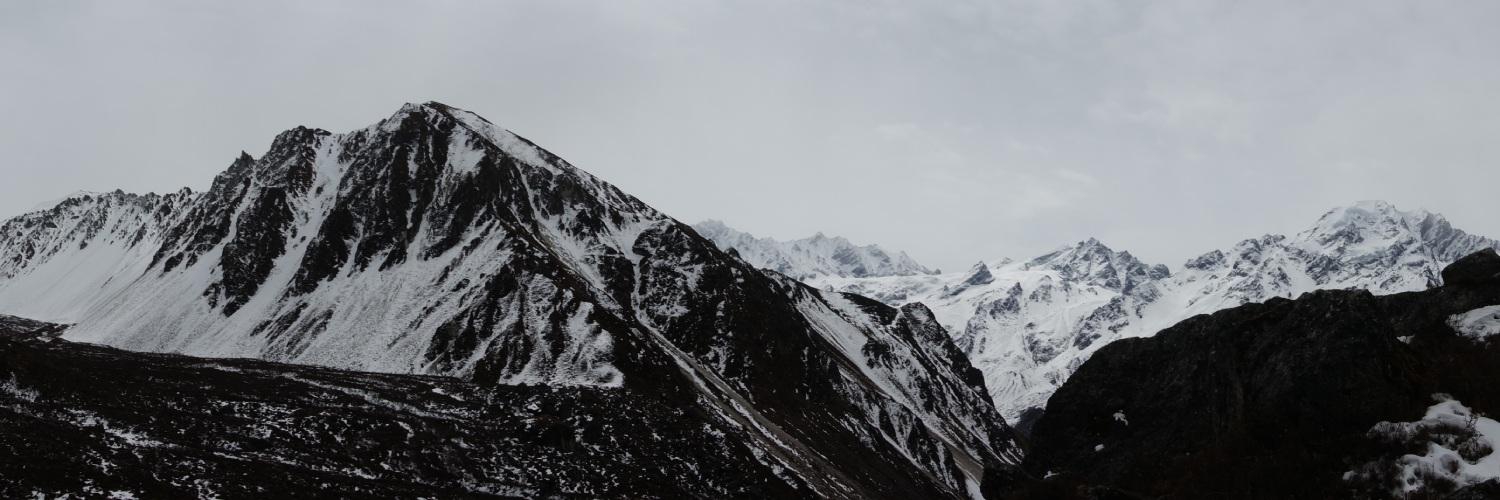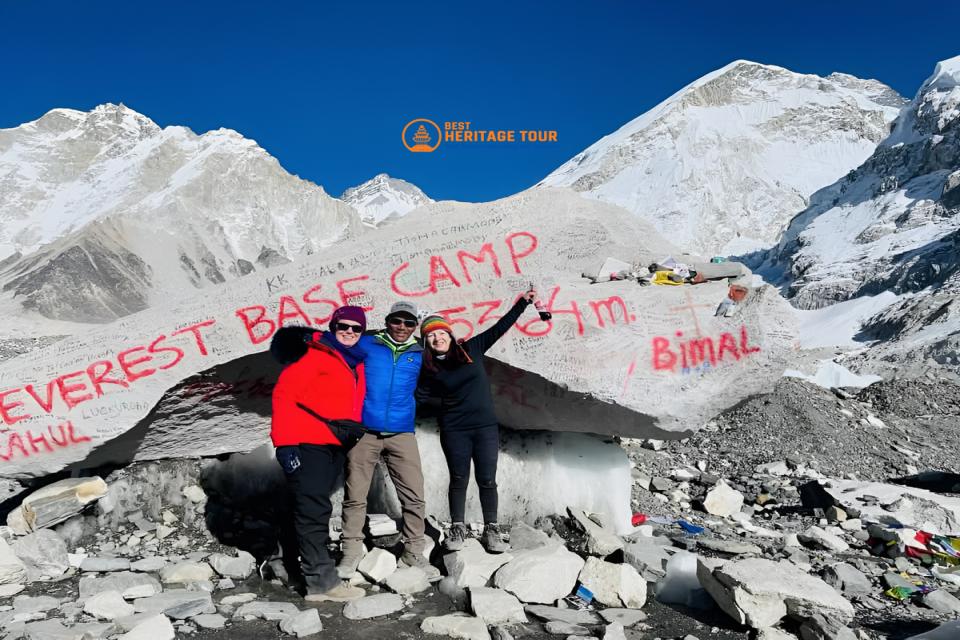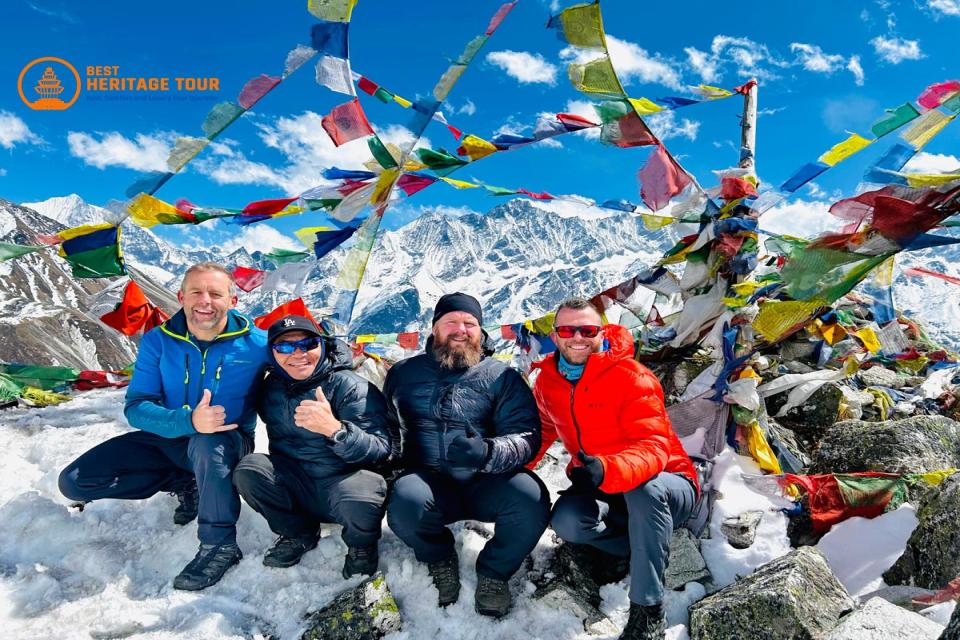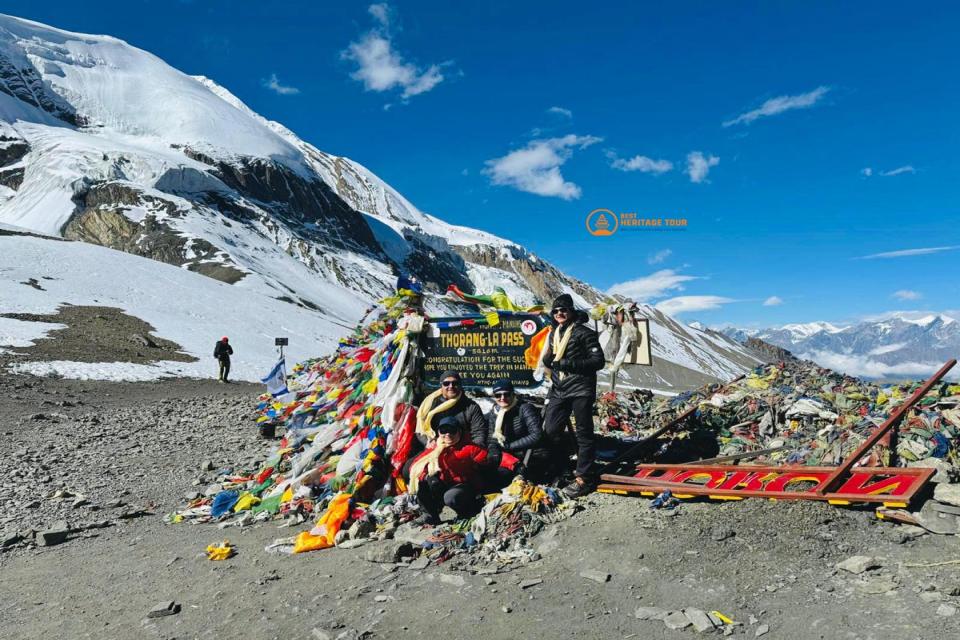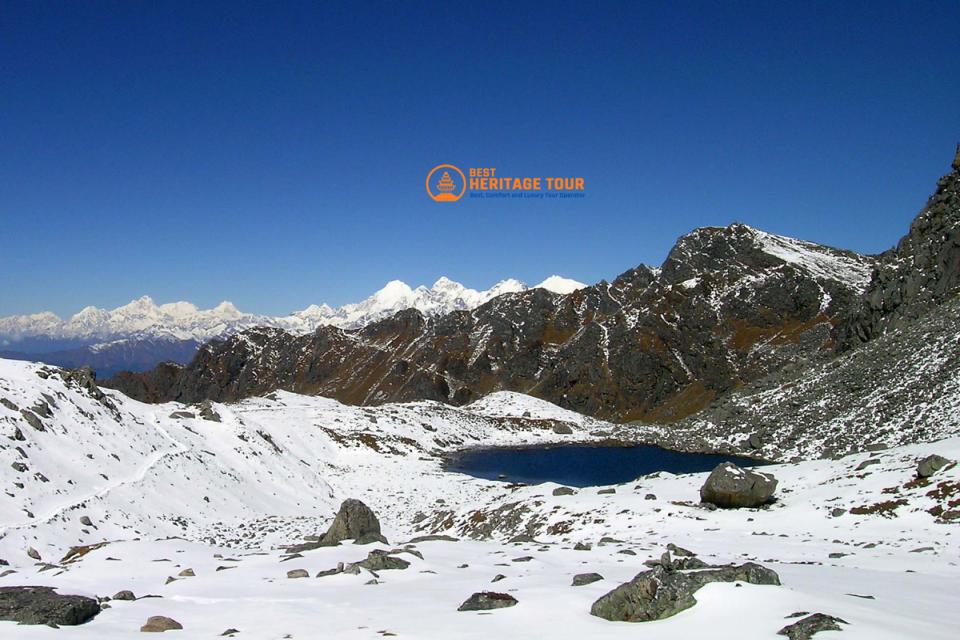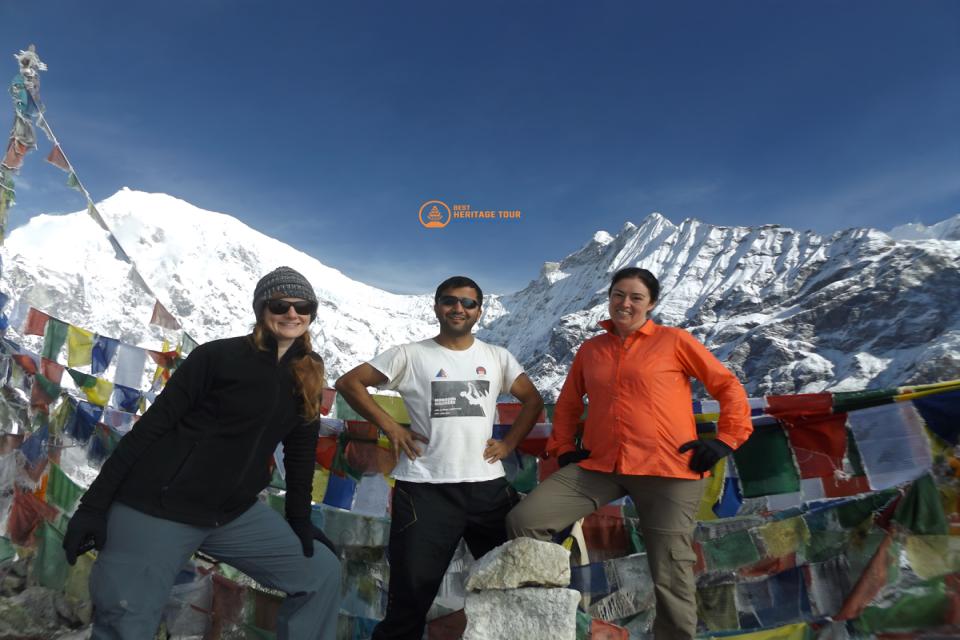Nestled in the northern Himalayas of Nepal, the Langtang Gosaikunda Trek offers a magical blend of alpine landscapes, sacred lakes, cultural richness, and serene villages. Just a few hours’ drive from Kathmandu, this off-the-beaten-path adventure combines the breathtaking Langtang Valley with the holy Gosaikunda Lake, making it one of the most rewarding trekking routes in Nepal.
Unlike the crowded trails of Annapurna and Everest, the Langtang Gosaikunda Trek lets you experience authentic village life, rich Tamang and Tibetan heritage, diverse flora and fauna, and awe-inspiring views of snow-capped peaks like Langtang Lirung (7,227 m). Whether you're a seasoned trekker or a determined beginner looking for a spiritual and scenic challenge, this journey has something for everyone.
Overview of the Langtang Gosaikunda Trek
The Langtang Gosaikunda Trek is a combination of two iconic trekking routes in the Langtang region, the Langtang Valley Trek and the Gosaikunda Lake Trek. Starting from Syabrubesi, you ascend through forested trails to Kyanjin Gompa, a traditional Buddhist monastery village with panoramic mountain views. The trail then continues through Lauribina Pass (4,610 m) to reach the sacred Gosaikunda Lakes, revered by Hindus and Buddhists alike.
Quick Facts:
- Duration: 12 to 15 days
- Max. Altitude: 4,610 m (Lauribina La Pass)
- Starting Point: Syabrubesi
- Ending Point: Dhunche or Sundarijal
- Trek Difficulty: Moderate to Challenging
Key Highlights:
- Experience Langtang Valley’s stunning glacial valleys, dense pine forests, lush meadows, and traditional terraced fields.
- Enjoy panoramic views of majestic peaks like Langtang Lirung, Dorje Lhakpa, and Gang Chenpo.
- Cross the scenic Lauribina La Pass (4,610 m) and visit the sacred alpine Gosaikunda Lake at 4,600 meters.
- Explore vibrant Tamang villages, ancient Buddhist monasteries, prayer flags, and sacred chortens along the trail.
- Witness spectacular glaciers, including Lirung and Kimsong, and visit the famous cheese factory in Kyanjin Gompa.
- Trek through the protected Langtang National Park, home to unique wildlife such as the red panda and the Himalayan monal.
Best Time to Do the Langtang Gosaikunda Trek
The Langtang Gosaikunda Trek is best done in spring (March-May) and autumn (September-November) for clear skies, stable weather, and stunning mountain views. Winter offers a quiet, snowy experience, while the monsoon brings heavy rain and slippery trails but fewer crowds and lush scenery. Below is the detailed seasonal breakdown:
-
Spring (March to May): Spring is one of the best seasons to trek. The trails are lined with blooming rhododendron forests, the skies are clear, and the temperatures are pleasant.
-
Autumn (September to November): This is the most popular trekking season in Nepal. The monsoon clears the dust and pollution, offering crystal-clear mountain views and stable weather.
-
Winter (December to February): While trekking is possible, expect snow-covered passes and freezing temperatures, especially around Lauribina La and Gosaikunda.
-
Monsoon (June to August): Trails are slippery and landslides are common. However, if you're seeking solitude and don’t mind rain, it’s doable with preparation.
Weather and Temperature by Season:
Temperatures in the Langtang Gosaikunda region vary widely with altitude and season. At Syabrubesi (1,500m), temperatures range from 15°C in winter to 25°C in summer. At Gosaikunda Lake (4,380m), expect subzero temperatures at night year-round, with daytime highs rarely exceeding 10°C even in summer. Proper layering and preparation for cold weather at high altitudes are essential regardless of season.
Langtang Gosaikunda Trek Itinerary (14 Days)
Here’s a popular and well-paced itinerary that balances altitude and adventure:
|
Day |
Destination |
Elevation |
|---|---|---|
|
1 |
Drive from Kathmandu to Syabrubesi |
1,550 m |
|
2 |
Trek to Lama Hotel |
2,380 m |
|
3 |
Trek to Langtang Village |
3,430 m |
|
4 |
Trek to Kyanjin Gompa |
3,870 m |
|
5 |
Acclimatization at Kyanjin + hike to Tserko Ri |
4,984 m |
|
6 |
Return to Lama Hotel |
2,380 m |
|
7 |
Trek to Thulo Syabru |
2,250 m |
|
8 |
Trek to Cholangpati |
3,650 m |
|
9 |
Trek to Gosaikunda |
4,380 m |
|
10 |
Cross Lauribina Pass to Ghopte |
3,440 m |
|
11 |
Trek to Kutumsang |
2,470 m |
|
12 |
Trek to Chisapani |
2,300 m |
|
13 |
Trek to Sundarijal and drive to Kathmandu |
— |
Note: This trek can be shortened or extended according to your pace and preferences.
Langtang Gosaikunda Trek Difficulty
The Langtang Gosaikunda Trek is considered moderately difficult, making it accessible to trekkers with good fitness levels, including beginners who are well-prepared for high-altitude conditions. While it's not as strenuous as the Everest Base Camp or Annapurna Circuit treks, it does present physical and environmental challenges that require proper preparation.
Trail Conditions and Terrain
- Varied terrain: forest paths, stone steps, and rocky trails
- Gentle ascent through Langtang Valley (2,500–3,800 m)
- Steep and rugged trail near Gosaikunda Lake (4,380 m) and Lauribina La Pass (4,610 m)
Altitude and Acclimatization
- Highest point: Lauribina La Pass (4,610 m)
- AMS risk begins above 3,000 m, especially past Kyanjin Gompa (3,870 m)
- Rest and acclimatization at Langtang Village (3,500 m) and Kyanjin Gompa recommended
Physical Fitness and Mental Readiness
- Trekking duration: 5–7 hours per day
- Requires good stamina and leg strength
- Remote, high-altitude conditions need mental resilience
- Prior trekking experience is a plus, but not mandatory
Who can do this trek?
- Trekkers with moderate fitness
- Beginners with prior hiking experience
- Older trekkers, if paced well and properly acclimatized
Permits and Fees Required
Before setting off on the Langtang Gosaikunda Trek, it’s essential to obtain the necessary permits to ensure a smooth and legal trekking experience. Nepal requires trekkers to carry specific permits for national parks and trekking areas, and the Langtang region is no exception.
TIMS Card (Trekkers’ Information Management System)
The TIMS card is mandatory for all trekkers in Nepal to monitor and manage trekking traffic for safety and environmental protection. It can be obtained through trekking agencies or directly at the Nepal Tourism Board offices in Kathmandu or Pokhara. There are two types of TIMS cards:
- Individual TIMS: For independent trekkers, priced at around NPR 2,000 (~$17 USD).
- Group TIMS: For groups of two or more, priced at NPR 1,000 (~$8.5 USD) per person.
Langtang National Park Entry Permit
Since the Langtang Gosaikunda Trek passes through Langtang National Park, trekkers must buy an entry permit. This permit supports conservation efforts in the park.
- Cost: Approximately NPR 3,000 (~$25 USD) for foreign nationals.
- The permit can be purchased in Kathmandu, Syabrubesi, or at the park entrance.
Where to Get Permits
- Kathmandu: Nepal Tourism Board offices, registered trekking agencies
- Syabrubesi: At the park entrance checkpoint
- Online: Some agencies offer assistance in advance
Additional Permits
For the Gosaikunda section, no extra permit is required beyond the Langtang National Park permit and TIMS card. However, if you plan to extend your trek beyond this region or connect with other trekking routes, additional permits might be necessary.
Cost of Langtang Gosaikunda Trek
Planning your Langtang Gosaikunda Trek budget depends on factors like transportation, permits, guide/porter services, accommodation, and meals. Here's a clear overview of typical trekking costs:
|
Category |
What to Expect |
Estimated Cost (USD) |
|---|---|---|
|
Trekking Permits |
- TIMS Card: $8–17 |
$33–42 (total) |
|
Transportation |
- Local bus/jeep (Kathmandu to Syabrubesi): $6–13 (one way) |
$12–170 (round trip) |
|
Accommodation |
- Basic teahouse rooms: $4–8 per night |
$4–13 (per night) |
|
Meals |
- Local dishes like Dal Bhat: $2.5–5 per meal |
$10–20 (per day) |
|
Guide & Porter (Optional) |
- Licensed guide: $20–30/day |
$32–50 (per day total) |
|
Extras & Miscellaneous |
- Hot showers, charging, Wi-Fi |
$50–100 (total) |
Estimated Total Trekking Cost
|
Trek Style |
Total Cost (Approx. in USD) |
|---|---|
|
Independent (Budget-Friendly) |
$600 – $800 |
|
With Guide & Porter (Comfortable) |
$1,000 – $1,300+ |
Note: Prices vary depending on the agency, services, and group size.
Accommodation and Food on the Trek
Along the Langtang Gosaikunda Trek, you'll stay in local teahouses, simple yet cozy lodges run by welcoming village families. While amenities are basic, they provide all the essentials for a comfortable Himalayan stay.
Accommodation Features:
- Twin-sharing rooms with clean bedding and shared bathrooms
- Communal dining halls with wood stoves for warmth
- Charging stations and Wi-Fi available (usually for a small fee)
Typical Meals on the Trek:
- Dal Bhat (rice, lentils, and vegetables – with free refills!)
- Tibetan bread, vegetable noodles, and steamed momo
- Yak cheese and herbal tea specialties in Kyanjin Gompa
These local meals are filling, affordable, and fuel you well for high-altitude trekking.
Transportation: How to Reach the Starting Point
The Langtang Gosaikunda Trek typically starts from Syabrubesi, a small town in Rasuwa district, north of Kathmandu.
Getting to the Starting Point:
- Kathmandu to Syabrubesi: 8–10 hours by local bus or shared jeep
- For added comfort, especially in groups, you can hire a private jeep (expensive but faster and flexible)
Return Options:
- Trek ends at Dhunche or Sundarijal, depending on your route
- Return to Kathmandu via local bus, shared jeep, or private vehicle
This route offers stunning Himalayan road views but involves bumpy, mountainous terrain, so travel time can vary based on weather and road conditions.
Trekking with or without a Guide
Choosing between trekking with a guide or going solo is a key decision for the Langtang Gosaikunda Trek. Both options have advantages and drawbacks related to safety, navigation, cost, and cultural experience.
|
Option |
Benefits |
Drawbacks |
|---|---|---|
|
With a Guide |
|
|
|
Solo Trekking |
|
|
Packing List for Langtang Gosaikunda Trek
Packing smart is essential for a safe and comfortable Langtang Gosaikunda Trek. Weather can be unpredictable, and trail conditions vary, so bring versatile clothing and reliable gear to stay warm, dry, and prepared. Here’s a comprehensive list of essentials to help you pack efficiently:
Clothing:
- Moisture-wicking base layers
- Down jacket, fleece, and rain shell
- Thermal pants, trekking trousers
- Gloves, woolen hat, sunhat
Gear:
- Sleeping bag (rated -10°C or lower)
- Trekking poles
- Headlamp, water bottles, water purification tablets
Other:
- Snacks, power banks, toiletries
- Trekking insurance
- Copies of permits and passport
Safety and Health Tips for the Langtang Gosaikunda Trek
Staying safe and healthy during the Langtang Gosaikunda Trek is essential for a rewarding and enjoyable adventure. Being aware of altitude sickness, maintaining proper hygiene, and making smart food choices can help prevent common trekking illnesses. Here are some important safety and health tips to keep in mind:
-
Altitude Sickness: Ascend gradually and stay well-hydrated to reduce risks of Acute Mountain Sickness (AMS).
-
Water Safety: Always treat or filter drinking water to avoid waterborne illnesses.
-
Travel Insurance: Choose insurance that covers high-altitude rescue and emergency evacuation.
-
Food Precautions: Avoid eating meat in remote areas where freshness and hygiene may be uncertain.
Local Culture, Nature, and Responsible Trekking on the Langtang Gosaikunda Trek
The Langtang Gosaikunda region is rich in Tamang and Tibetan Buddhist culture, natural beauty, and ecological significance. Trekking here offers a unique chance to experience ancient traditions, stunning wildlife, and breathtaking landscapes, while practicing responsible tourism.
Local Culture and People
The area is inhabited by welcoming Tamang and Tibetan Buddhist communities. You will encounter:
- Historic monasteries like Kyanjin Gompa
- Colorful prayer flags, mani walls, and chortens
- Warm hospitality and authentic traditional foods
Respect local customs:
- Always ask permission before taking photos
- Avoid touching religious objects
- Dress modestly to honor local traditions
Flora and Fauna of Langtang National Park
Langtang National Park, Nepal’s first Himalayan conservation area, features diverse ecosystems:
- Flora: Dense forests of oak, pine, rhododendron, and bamboo, plus alpine meadows and yak pastures above 3,000 m
- Fauna: Home to elusive red pandas, Himalayan tahr, langurs, musk deer, and over 250 species of birds
Responsible and Eco-Friendly Trekking
Help protect this pristine environment by:
- Using reusable water bottles and avoiding plastic waste
- Leaving no trash behind on the trails
- Supporting local teahouses and guides for sustainable tourism
- Staying on marked trails to preserve delicate vegetation
Langtang Gosaikunda Trek vs Other Treks
|
Trek |
Duration |
Scenery |
Crowd |
Difficulty |
|---|---|---|---|---|
|
Langtang Gosaikunda |
12–15 days |
Lakes + peaks + culture |
Moderate |
Moderate-Challenging |
|
Langtang Valley Only |
7–9 days |
Mountain views |
Low |
Moderate |
|
Gosaikunda Only |
6–8 days |
Sacred lakes |
Low |
Moderate |
|
Annapurna Circuit |
14–20 days |
Varied |
High |
Challenging |
|
Everest Base Camp |
12–14 days |
Iconic views |
Very High |
Challenging |
Final Tips and Suggestions
To make your Langtang Gosaikunda Trek safe and enjoyable, keep these essential tips in mind:
- Book your trek early during peak seasons (September–November and March–May) to secure accommodation and guides.
- Acclimatize properly, especially before crossing the high Lauribina La Pass (4,610 m) to avoid altitude sickness.
- Carry enough cash, as there are no ATMs available along the trekking route.
- Always respect the natural environment, local culture, and traditional ways of life to ensure a positive experience for everyon
Conclusion: Why Choose the Langtang Gosaikunda Trek?
The Langtang Gosaikunda Trek offers an incredible mix of stunning Himalayan landscapes, rich Tamang and Tibetan culture, and spiritual experiences at sacred lakes like Gosaikunda. This moderate to challenging trek is ideal for both beginners with good fitness and seasoned trekkers looking for an off-the-beaten-path adventure. With panoramic mountain views, unique wildlife in Langtang National Park, and authentic local hospitality, it provides a truly memorable Nepal trekking experience away from the crowds.
To enjoy a safe and rewarding trek, plan your journey during the best seasons, spring or autumn, and prepare properly with necessary permits, gear, and health precautions like acclimatization. By respecting the environment and local traditions, you contribute to sustainable tourism and preserve the beauty of this Himalayan gem. Start your Langtang Gosaikunda Trek today and discover one of Nepal’s most captivating trekking routes.
Ready to trek the Langtang Gosaikunda Trek in 2025/2026? Join Best Heritage Tour for an expert-led adventure with easy permits, reliable transport, and customized itineraries. Focus on the journey, we handle the rest!
Book now or get more info now:
- Phone/WhatsApp/Viber: +9779851149197 / +9779810043046
- Email: bestheritagetour@gmail.com / info@bestheritagetour.com
- Website: www.bestheritagetour.com
- Location: Thamel Marg, Kathmandu, Nepal
Author: Best Heritage Tour
Date: 24th June, 2025

